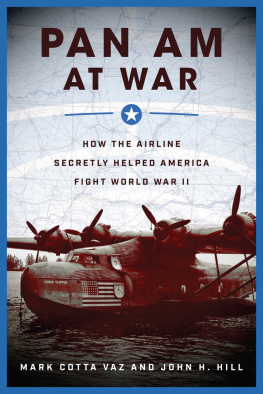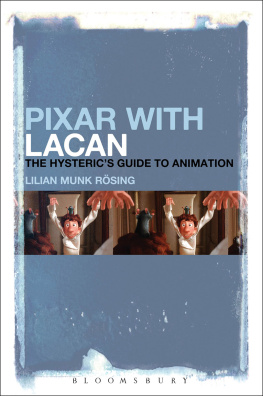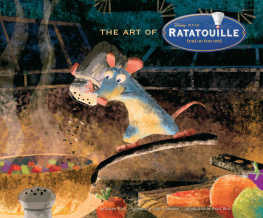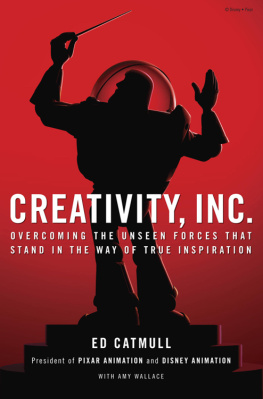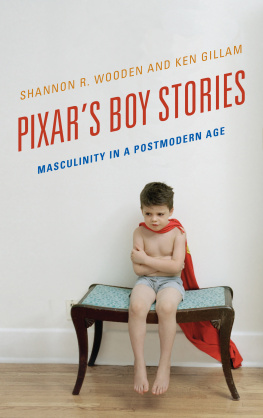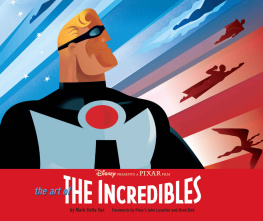
Anthony Christov
pencil, 9 x 63/4"
To the crew of Finding Nemo, who created the beautiful world of this film. Thank you for jumping into the waters with us; this book is dedicated to you and your families.
Andrew Stanton , writer-director
Graham Walters , producer

Geefwee Boedoe
color pencil, 6 x 4"
Copyright 2003 by Disney Enterprises, Inc./Pixar Animation Studios.
All rights reserved. No part of this book may be reproduced in any form without written permission from the publisher.
ISBN 978-0-8118-3975-4 (hc)
ISBN 978-1-4521-4748-2 (epub, mobi)
Designed by Laura Lovett
Typeset in Foundry Sans
Chronicle Books LLC
680 Second Street
San Francisco, California 94107
www.chroniclebooks.com

Mark Whiting
acrylic, 83/4 x 61/4"
Forewords
Andrew Stanton is my colleague, friend, and creative collaborator at Pixar. During A Bug's Life, he started toying with an idea for a feature film. Well, tell me, tell me, tell me," I said. "No, let me think about this for a little while, he answered. Finally he got to the point where he said, "I'm going to tell you this story I've been thinking about." He continued with an incredible one-hour story pitch that was riveting, emotional, funnya story about a father and son. It was just amazing and I was strapped to my seat. After the pitch he said, "John, what do you think?" I said, "You had me at the word fish."
John Lasseter
executive producer

Ronnie del Carmen
digital
I grew up in Massachusetts, by the sea, and I remember going to my family dentist, who had this funky fish tank in his office. All kids are attracted to aquariums, and I remember staring at this tank and thinking what a weird view of the world this must be for the fishitd be like flying into Las Vegas and thats your first view of America. I assumed, when I was a child, that all fish in tanks were originally from the ocean and wanted to go back home.
In 1993, I took my son Ben, who was one year old, to Marine World, where theyd opened this fish exhibit that had a tunnel with a massive glass wall. Id never scuba dived at that point, but if you stood close to the glass, you got the feeling of being underwater with all these tropical fish. This was two years before Toy Story, when people were questioning whether audiences would even sit through a computer graphics (CG) feature. But I remember, even then, thinking how in CG we could make an underwater world, that CG would be the perfect medium for that world.

Ronnie del Carmen
pastel and ink, 91/4 x 5"
The idea stayed on the back burner as I worked on the slate of Pixar productions that followed the success of Toy Storyand waited for the spark thatd finally fire up the gestating idea. I had the environment and the situation, but the idea didnt kick into gear until I came up with something that mattered to me emotionally.
The final piece fell into place when Ben was about five years old and I took him for a walk to the park to have some father/son time. It was only two blocks away, but the whole time I kept saying, Don't touch that ... be careful ... stay away from the curbcars! I suddenly became aware of what I was doing. I thought about the dilemma of being a parent and having protective instincts that can consume you and keep you from being the interactive parent your child needs you to be. The premise I concluded with was, Fear denies a good father from being one. That conflict intrigued me and sparked the idea of making a story that focused on the parent, not the child. That walk to the park with my son really connected the dots, and from 1999 on I got serious about making Finding Nemo.
So, its been a long journey from my dentists office until now, with many incredible artists joining up along the way to help turn this little fish idea into a reality. This book is a tribute to their amazing talents, and a peek into how it takes a sea of visionaries to make a single vision possible. Enjoy.
Andrew Stanton
writer-director
Introduction
by Mark Cotta Vaz

line art by Dan Lee
Across the Bay from San Francisco, in the town of Emeryville and on the former site of the Oakland Oaks baseball field and most recently Del Monte Plant 35, a different kind of factory opened its doors after the Thanksgiving holiday of 2000a story factory, the home of Pixar Animation Studios. Pixar has been releasing feature-length computer animated films (commonly called CG films) since Toy Story in 1995, but the company founders first encountered the mysteries of computer animation when it was sequestered in university labs and locked away in corporate think tanks. It took years of research and development before they uncorked the magical digital genie and made it tell stories. And that genie keeps exponentially growing, promising ever-more-creative possibilities.
Stepping inside Pixar Animation Studios, one enters an atrium that looks like a Machine Age train station and forms a cathedral of space, with sunshine filtering through vaulting skylights and glass walls. Above the lobby floor, at each end, two bridges (including one dramatically arching span from which the company has held paper-plane flying contests) connect the upper levels east side and west side. To traverse the vast atrium and its ground level and upper corridors, many Pixar employees favor gliding around on scooters and skateboards (and one wonders if Buzz Lightyear rocket shoes might propel them in the future).
If the atrium is, as the company planned, the living room, then the animators area is the playroom, a place where creativity is unleashed even in office and hallway decor, decorated with an exotic Tiki theme, a general store, and a corner office fashioned into a castle wall and turret. An aquarium in the corridor, stocked with tropical fish, fits right in, but also served as reference for the fish characters of Finding Nemo, Pixars fifth feature, released in partnership with Walt Disney Pictures.
Flitting near the tanks surface are two orange-and-white striped clownfish, the species that inspired the characters of little Nemo and his overprotective dad, Marlin, known to the production as Father. In the film, Nemo gets scooped up by a diver and taken from his coral reef home to a fish tank in a dentists office overlooking the harbor of Sydney, Australia, and Father must brave the dangers of the deep to find his son. In the tank there is also a delicate slice of fluorescent blue, a regal blue tang that stars as the daffy, memory-challenged Dory. In the Pixar tradition of buddies (ranging from the Toy Story duo of Woody and Buzz to the furry giant Sulley and one-eyed Mike of Monsters, Inc.), Father and Dory are partners in the epic search for Nemo.
Next page

